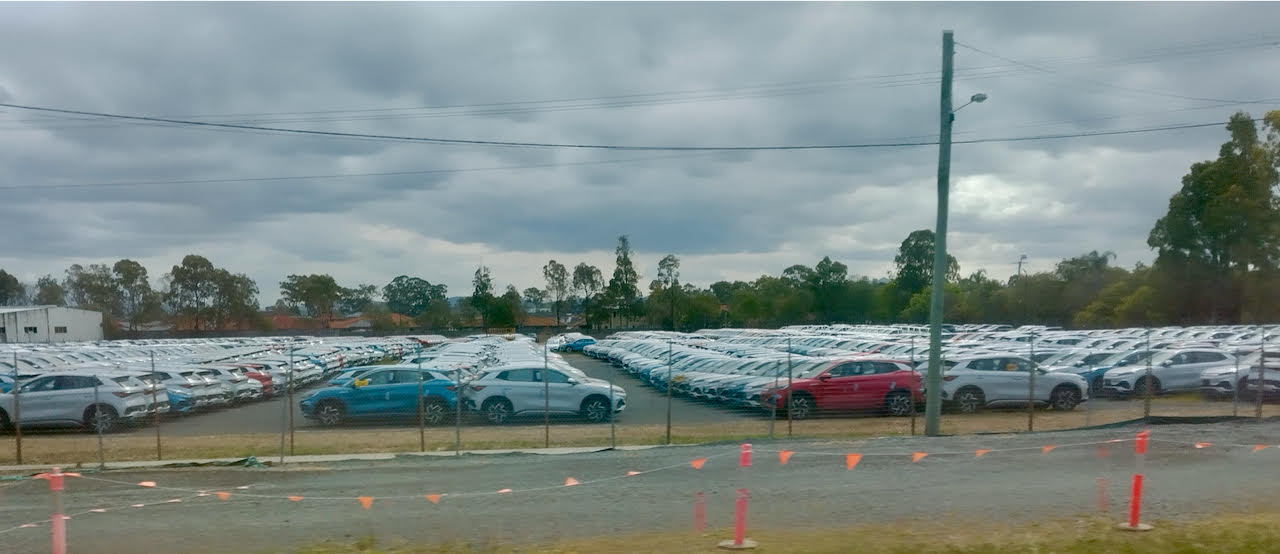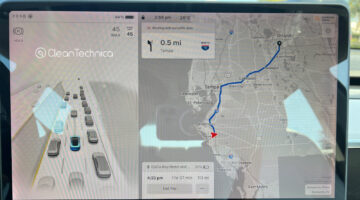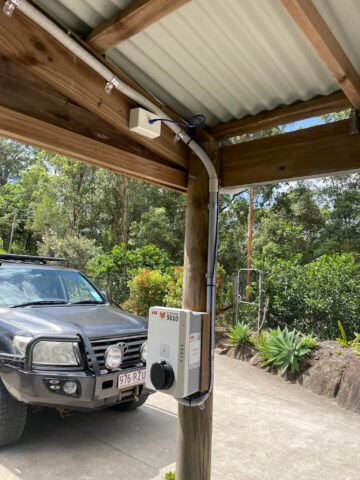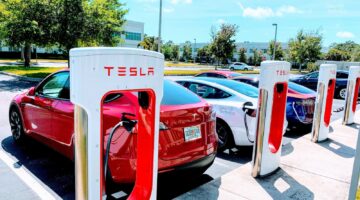Sign up for daily news updates from CleanTechnica on email. Or follow us on Google News!
The turbulence in New Zealand’s political scene is affecting the automotive sector. It is likely that a right-leaning coalition will take control of government and end the country’s generous tax incentives for EVs and punitive taxes on fossil-fueled cars. This means that sales for EVs are likely to be strong till the end of the year, while sales of diesel and petrol cars will surge in the new year. Twenty-nine percent of new cars sold in New Zealand in October came with a plug (20% BEV, 9% PHEV). That’s down just slightly from last month (34%). Another 29% of the market were HEVs, 33% were pure petrol, and 8% were pure diesel. Over 10,000 light vehicles were sold in New Zealand in October 2023.
Overall, car sales are down 7% compared to this time last year, and the New Zealand economy is tight, with cash rates sitting at 5.5%. Inflation has fallen slightly and sits at 5.6%. Headwinds for car buyers, indeed.
Across the ditch in Australia, sales seem to have tanked to a measly 6.5% plugin car market share in a resurgent auto market. Rumor has it that ships containing EVs have fallen afoul of biosecurity and are unable to load. Word on Facebook is that one ship has failed its inspection more than once.
However, the future looks bright, as Tesla is likely to launch its refreshed “Highland” Model 3 soon and BYD is stockpiling cars. On a recent visit to Tangalooma Island Resort, we saw three RORO car transporters heading into port.

Yesterday, one of my correspondents sent me this picture taken from his commuter train of a “Field of (Build Your) Dreams” on the north side of Brisbane:

Let’s cover New Zealand first. The 10 top selling BEVs in New Zealand in October 2023 were:
- MG4 (357)
- BYD Atto 3 (246)
- Nissan Leaf (165) + 496 used imports.
- Tesla Model Y (139)
- MG ZS EV (122)
- BYD Dolphin (113)
- GWM ORA (97)
- VW ID 4 (97)
- Kia EV 6 (69)
- Polestar 2 (60)
Some of these vehicles were not on the chart last month, as NZ’s auto market suffers from the vagaries of auto importers and overseas logistics. It is worth noting that 63 electric BMWs were sold (of a variety of types) and 54 MINI EVs. The chart is being dominated by lower priced “city” BEVs like the MG4. The MG4, BYD Dolphin, and GWM ORA have only been available for a few months. The ORA is now the lowest priced new BEV on the market, after dropping in price by 10%. If you are willing to go second hand, NZD$22,000 will get you a “well-specced” used Nissan LEAF with about 230 km of range.
On the podium for BEV brand sales are: gold to MG (479), silver to BYD (359) and bronze to Nissan (169). If we had included the used Nissan LEAFs, Nissan would have been number one (661 units). Full details are available from EVDB. For the curious, only five Tesla Model 3s sold in NZ in October 2023.
Top selling plug in hybrids (PHEVs) were:
- Mitsubishi Outlander (235) — this a comparable figure to Ford’s and Toyota’s diesel sales
- Mitsubishi Eclipse Cross (195)
- Kia Sorrento (165)
- Kia Niro (111)
- Mini Countryman (33)
- Ford Escape (27)
- Jeep Compass (22)
- MG HS (19)
- Mazda CX 60 (18)
- Cupra Born Formentor (17)
In contrast: Toyota sold over 1700 HEVs of various sorts and 207 diesel utes.
Speaking of utes, LDV is ending the run of the LDV eT60. The LDV was NZ’s only BEV ute. At present, stock is being cleared with massive discounts. Elon is not the only one facing difficulties bringing an electric ute to market.
According to EVDB: “The light commercial sector is a major hurdle in the transition to electric. In 2023, utes and light vans made up a quarter of new vehicles sales. Of that, less than 1% were fully electric.” BYD hopes to bridge the gap with a PHEV ute in 2024, with a fully electric version to follow. Mitsubishi’s Outlander sales are showing that there is a market for PHEV utes in New Zealand. Mitsubishi sold 235 PHEV utes in October 2023. Compare this with the 207 diesel utes sold by Toyota and 201 sold by Ford.
New Zealand now has 93,000 plugin vehicles on the road, of which 65,000 are fully electric.
And what about Australian numbers. We need to be aware that Australia’s auto market is ten times the size of New Zealand’s, so we are talking bigger numbers. However, we have the same issues that arise from having no domestic carmakers. The October drop in penetration rate from over 10% in September to around 6.5% in October is likely just seasonal (plus the aforementioned insect infestation). Let’s hope the upward momentum is regained as we move towards the end of the year.
The 10 top selling BEVs in Australia in October 2023 were:
- Tesla Model 3 (1,178) — year to date: 15,718
- BYD Atto 3 (912) — year to date: 9,618
- Tesla Model Y (810) — year to date: 24, 267
- MG4 (751) — year to date: 1,692
- Kia EV6 (220) — year to date 1,367
- MG ZS EV (190) — year to date: 2,549
- Mercedes-Benz EQA (162) — NB the EQB sold 91, and the EQC 32
- Volvo XC40 Recharge (149) — year to date: 2,434
- Cupra Born (128)
- BYD Dolphin (100)
- Hyundai Ioniq 5 (99)
Compare this with the figures for the Ford Ranger — 6215, the Toyota Hi Lux — 5766, and the Isuzu D-Max — 3198. The Tesla Model Y was the third placed passenger vehicle in September with 3811 deliveries; it is now 37th on the table. We can blame shipping issues and biosecurity transgressions as the Glovis RORO circles off the Brisbane coast.
Missing from the top ten is the Great Wall Motor ORA — the third in the “affordable electric triumvirate” (thank you John Law of whichcar for this adorable turn of phrase!). The ORA sold 77 units in October for a year-to-date figure of 360. LDV managed to sell 4 of its electric delivery vans (I have no idea why more logistics companies are not using these to increase their profits and reduce their costs) and 13 of its electric utes.
We should give the Nissan LEAF a veteran’s encouragement award. The LEAF is still hanging in there while its compatriots — the BMW i3 and Renault Zoe — seem to have vanished from Australian shores.
There has been an increase in PHEV deliveries, mainly driven by the Mitsubishi Outlander, reaching 2228. Russel Coight’s ads are cutting through. The top small car over AUD$40,000 was the MG 4 (751). Although, it was soundly beaten by the Toyota Corolla on price (sub AUD$40,000) and volume (1746 units).
The Tesla Model 3 (1178 sales) is still outselling its lower priced Camry competitor (925). The only notable rise in electric vehicle categories, though, appears to be PHEV SUVs. Thanks, Russell.

Comparing figures from 12 months ago — in October 2022, 2098 BEVs were sold in Australia, while October 2023 saw 6057 sales — almost triple the volume. PHEVs have had an even bigger increase, going from a minuscule 464 to 1738. The Russell Coight effect. Sadly, hydrogen powered cars seem to have vanished — 3 were delivered in October 2022, but none were delivered last month.
Toyota still has over 20% of the Australian market.
Anecdotal evidence points to a bumper final two months of 2023 for the Australian EV market. Just recently, a correspondent pointed me to a “field of (Build Your) dreams.” Just north of my home, next to Strathpine railway station, we found a holding lot containing over 600 BYD Atto 3s. Some are speculating that these might be for Uber drivers. Similar large lots of BYDs are being spotted in Melbourne (Victoria) and Perth (Western Australia).

Out of the one million cars sold to date in Australia in 2023, almost 72,000 come with a plug. Numbers are only expected to rise, not only after bug spray on those Teslas that are now at sea, but also because more models are due for release in the next few months from Volkswagen (ID); Polestar (3); Subaru (Solterra); Peugeot (e-2008), and Renault (Megane-E). And from China, BYD should be delivering the already popular Seal and is promising a PHEV ute and a large BEV SUV. Chery has re-entered the Australian market and is expected to bring its Omoda 5 EV by mid year. Ford is talking about an electric Puma and Nio is looking to launch here in 2025.

The Future looks bright, and electric.

Have a tip for CleanTechnica? Want to advertise? Want to suggest a guest for our CleanTech Talk podcast? Contact us here.
EV Obsession Daily!
[embedded content]
I don’t like paywalls. You don’t like paywalls. Who likes paywalls? Here at CleanTechnica, we implemented a limited paywall for a while, but it always felt wrong — and it was always tough to decide what we should put behind there. In theory, your most exclusive and best content goes behind a paywall. But then fewer people read it!! So, we’ve decided to completely nix paywalls here at CleanTechnica. But…
Thank you!
Iontra: “Thinking Outside the Battery”
Advertisement
CleanTechnica uses affiliate links. See our policy here.
- SEO Powered Content & PR Distribution. Get Amplified Today.
- PlatoData.Network Vertical Generative Ai. Empower Yourself. Access Here.
- PlatoAiStream. Web3 Intelligence. Knowledge Amplified. Access Here.
- PlatoESG. Carbon, CleanTech, Energy, Environment, Solar, Waste Management. Access Here.
- PlatoHealth. Biotech and Clinical Trials Intelligence. Access Here.
- Source: https://cleantechnica.com/2023/11/13/politicians-insects-drive-ev-market-in-new-zealand-australia/
- :has
- :is
- :not
- $UP
- 000
- 1
- 10
- 100
- 12
- 12 months
- 13
- 15%
- 17
- 178
- 19
- 195
- 2022
- 2023
- 2024
- 2025
- 22
- 220
- 24
- 27
- 33
- 360
- 54
- 60
- 65
- 72
- 77
- 9
- 91
- 97
- a
- About
- adorable
- Ads
- Advertise
- affecting
- Affiliate
- After
- almost
- already
- also
- Although
- always
- an
- and
- Another
- appears
- ARE
- arise
- around
- AS
- At
- Australia
- Australian
- auto
- automotive
- available
- awaiting
- award
- aware
- battery
- BE
- because
- been
- behind
- being
- BEST
- bigger
- Bit
- BMW
- born
- brand
- Brian
- BRIDGE
- Bright
- bring
- Bringing
- Brisbane
- Bug
- build
- but
- buyers
- by
- byd
- came
- CAN
- car
- cars
- Cash
- categories
- Chart
- China
- chip
- circles
- cleantech
- Cleantech Talk
- coalition
- Coast
- COM
- come
- commercial
- Companies
- comparable
- compare
- compared
- Compass
- competitor
- completely
- content
- contrast
- control
- Costs
- country’s
- cover
- Cross
- curious
- cutting
- CX
- Date
- decide
- decided
- delivered
- Deliveries
- delivering
- delivery
- details
- diesel
- difficulties
- discounts
- Dolphin
- Domestic
- don
- down
- dreams
- drive
- driven
- drivers
- Drop
- Dropping
- due
- economy
- effect
- Electric
- electric vehicle
- Elon
- embedded
- end
- ending
- escape
- EV
- Even
- evidence
- evs
- Exclusive
- expected
- facing
- Failed
- Fallen
- felt
- few
- fewer
- Figure
- Figures
- final
- First
- five
- follow
- For
- Ford
- found
- from
- full
- fully
- future
- gap
- generous
- get
- Give
- Go
- Goes
- going
- Gold
- Government
- great
- Guest
- had
- hand
- Have
- having
- Heading
- headwinds
- help
- here
- hi
- his
- holding
- Home
- hope
- hopes
- However
- HTTPS
- hurdle
- hydrogen
- i
- i3
- ID
- idea
- if
- implemented
- imports
- in
- Incentives
- included
- Increase
- indeed
- inflation
- into
- island
- issues
- IT
- ITS
- jpg
- just
- large
- Last
- Last Year
- launch
- Law
- less
- light
- like
- likely
- likes
- Limited
- links
- load
- logistics
- looking
- LOOKS
- Lot
- lots
- lower
- lowest
- made
- mainly
- major
- managed
- Market
- market share
- massive
- max-width
- me
- means
- Media
- Melbourne
- Mid
- might
- million
- model
- models
- Momentum
- Month
- months
- more
- morning
- most
- Motor
- move
- my
- Need
- New
- new year
- New Zealand
- news
- next
- nio
- Nissan
- no
- None
- North
- notable
- noting
- now
- number
- numbers
- october
- of
- off
- on
- once
- ONE
- only
- or
- Other
- our
- outside
- over
- overseas
- penetration
- People
- percent
- Perth
- photo
- picked
- picture
- placed
- plato
- Plato Data Intelligence
- PlatoData
- player
- plug
- plugin
- plus
- podcast
- podium
- points
- policy
- political
- Politicians
- Popular
- powered
- present
- price
- profits
- promising
- publish
- PUMA
- put
- Quarter
- Railway
- range
- Rate
- Rates
- reaching
- Read
- Reader
- recent
- recently
- Recharge
- reduce
- release
- Renault
- Resort
- Rise
- road
- Run
- sales
- same
- saw
- scene
- SEA
- seasonal
- Second
- sector
- see
- seem
- sell
- Selling
- sent
- September
- service
- Share
- Shipping
- ships
- should
- showing
- side
- Silver
- similar
- sits
- Sitting
- Size
- small
- So
- sold
- some
- son
- Soon
- station
- Still
- stock
- Stockpiling
- Stories
- strong
- Suffers
- suggest
- support
- surge
- SUVs
- T
- table
- Take
- taken
- Talk
- talking
- Tanked
- tax
- Taxes
- team
- ten
- Tesla
- Teslas
- than
- thank
- that
- The
- The Future
- their
- then
- theory
- There.
- These
- Thinking
- Third
- this
- those
- though?
- three
- Through
- till
- time
- times
- tip
- to
- top
- Top Ten
- tough
- towards
- toyota
- Train
- transition
- treatment
- Triple
- turbulence
- TURN
- two
- types
- Uber
- unable
- units
- Updates
- upward
- upward momentum
- us
- used
- uses
- using
- variety
- various
- Ve
- vehicle
- Vehicles
- version
- Victoria
- Video
- Visit
- volkswagen
- volume
- Waiting
- Wall
- want
- was
- watching
- we
- were
- Western
- What
- which
- while
- WHO
- why
- will
- willing
- with
- Word
- worth
- would
- write
- Wrong
- year
- you
- Your
- youtube
- Zealand
- zephyrnet








